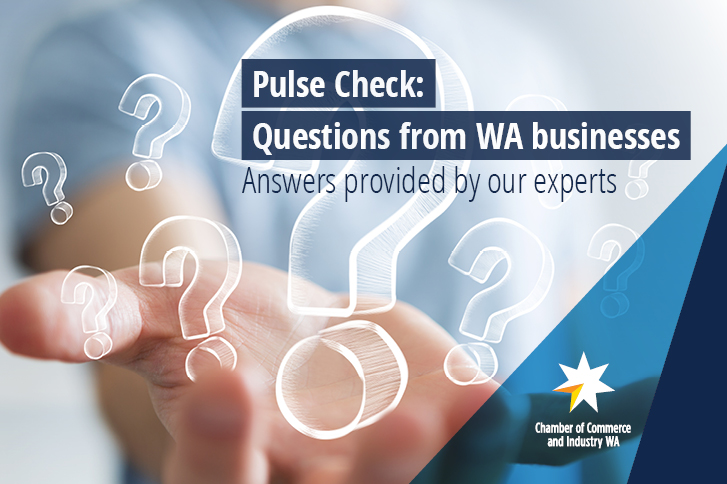Every workplace needs a strategy in place to ensure you’re on top of employee mental health. We step you through it.

There are a number of things to consider when developing a mental health strategy.
- Involve management, experts and employee representatives in the process.
“As part of this process, it would be a good idea to undertake an assessment to see what the current mental health status in the organisation is,” CCIWA Senior Employee Relations Adviser Eve Vasilas says.
This can be done via a staff survey, reviewing exit interview reports or data on turnover and absenteeism and workers’ compensation.
- Prioritise the areas that are the most urgent and important, but also the ones that will have the most buy-in for action as well.
“Look at those goals and issues that you've developed and again liaise with your stakeholders or consult with other stakeholders (external and internal) to seek some further feedback and agreement, ”Vasilas says.
- Narrow it down to a few key goals and develop some realistic and achievable action plans to create a mentally healthy workplace.
Check that the plans cover the three core principles of a mentally healthy workplace (as outlined here).
Implementation and review
For a strategy to be successful, it should be supported by an implementation plan and robust review.
Implementation plan: This will answer questions such as how and when you're doing different aspects of the strategy. It should cover the timing of when you're rolling out various initiatives and strategies, and also what communication you're going to issue to staff and when you’re going to say it.
Assign accountability. Have some clear, tangible and realistic accountabilities, that are assigned to people who look after teams. And integrate your initiatives with ‘business as usual’ processes and workflows so they are more likely to actually be successful and maintained long term.
Make the change visible and transparent, so include checkpoints in your plan to communicate what you're doing, how it's going, and what changes you've made. Employees can become quite frustrated if they hear a lot of talk, but they can't actually see any progress towards these goals.
Monitor and evaluate: Utilise the data that you've collected earlier in this process, to see how you're going, how you’re progressing against your goals and against the strategy, and seek feedback from employees on how they feel that the strategy is tracking. Having a mentally healthy workplace is obviously an ongoing process that should be reviewed on a continuous basis.
Continuous improvement: Organisations should look at ways to measure and monitor mental health in the workplace, and be adaptable and flexible to a changing environment and changing work demands as well.
Strategies for mental health wellbeing
Effective policies and procedures
Implementation of policies that support mental health wellbeing include:
- Work-life balance, flexible working arrangements
- Wellbeing workplace support such as healthy snacks, fitness classes and wellbeing workshops
- Bullying, harassment and discrimination policies
- Reasonable adjustments to support return to work/stay at work for employees suffering from mental health illness
Education and training
Mental health education to all employees that covers:
- What is mental health?
- Mental health and the workplace
- Prevention and management
Reward and recognition
- Evaluate and reward performance
- Provide feedback
- Create opportunities for learning
- Career advancement
How to respond to an employee suffering with a mental health issue
CIWA Employee Relations Advice Centre Manager Siobhan Griffiths says the following are some ways to respond to an employee with a mental health issue.
1. If you see something, say something. If a staff member is not acting like themselves, running uncharacteristically late or their performance has dropped, have a conversation with them.
2. No judgement. If a staff member discloses they have mental health issues, ensure you don’t judge them.
3. Be curious. Ask questions to determine the risk to a person’s health and wellbeing and to determine next steps.
4. Encourage support. This could be through family, friends, GP, psychologist, or the Employee Assistance Program.
5. Ask for evidence where needed. Asking for medical evidence that they are fit to work provides the employee with an opportunity to go to their GP or another service for help.
6. Be flexible (where reasonable). Try to facilitate changes such as different working hours, where applicable.
Griffiths recommends seeking specific advice for each employee’s circumstances, especially if their situation is complicated.

Our Employee Relations Advice Centre is also available to respond to your questions on (08) 9365 7660, or via [email protected].






